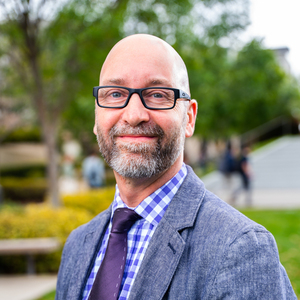In another moment of reception of Bunyan’s "The Pilgrim's Progress," I look again to art. This time, not to American landscapes, but to European expressionism.
Locked up in the crypt below the now disused St. Elisabeth’s Church building, in Eastbourne, England, a building whose structural flaws have it earmarked for demolition, a flowing mural surround depiction of "The Pilgrim's Progress" has been "rediscovered" for a broader viewership and, thus far, saved from demolition.
The campaign website to preserve the work sets the value of the mural in these terms:
"Pilgrim’s Progress is unique among Hans Feibusch murals, in that it was a non-commissioned autobiographical project. As such, it is not only a rare example of British Holocaust art, but also a disturbing visual record that has enormous resonance in the context of modern anxieties about the displacement of refugees from conflict zones and the position of the British people in the history of diaspora. It is also a work of great spiritual significance and a registered war memorial. Properly preserved, interpreted and displayed, it has the potential to be a powerful educational tool in the service of peace."
The British Imperial War Museum, documenting war memorials, refers to the St. Elisabeth’s Crypt as a "Chapel of Remembrance with mural covering walls. Painting depicts scenes from "Pilgrim's Progress" by John Bunyan by Hans Feibusch, a refugee from Nazi Germany who enlisted the help of local people to complete it during the Second World War."
The story of the artist is fascinating; fleeing Germany in 1933, Hans Feibusch, of Jewish descent, was already an accomplished sculptor and painter. One of the sad evidences of his prominence and provenance was the inclusion of his work in the Nazi’s "Degenerate Art" exhibition of 1937, initially in Munich, under the banner of "Revelation of the Jewish Racial Soul."
According the website dedicated to him, "until his death in July 1998, Feibusch was believed to be the last surviving artist of the Degenerate Art Exhibition. An inventory of works was found through research in the 1990’s. It was created by the Nazis, and among the scores of artists, there were recorded some six works by Hans Feibusch and an 'X' against each one indicating that they had all been destroyed."
A silent video recording of patrons attending the exhibition is housed digitally by the US Memorial Museum of the Holocaust. The relevant part of the video begins at 09:22min until the end. Feibusch’s work does not appear.
Escaping his homeland, Feibusch made Great Britain his adoptive home. He quickly found himself in artistic circles, and his geographical and cultural transposition also effected a religious transformation, whereby he came to be baptized in the Church of England. His work as a painter and muralist achieved great renown, and adorns many church buildings, as well as museum archives. In the last few years of his long life, he reverted to his Jewish religious identity, and was buried, having nearly reached the age of 100, according to Jewish rites.
What is it about his journey as a refugee that invites Feibusch into sympathy with Bunyans’s classic? Particularly, as this work is early (1944), when prospects for peace and prosperity were still perilous? Alex Grey, of the Martyr’s Gallery, running the campaign to save the mural, writes (above) of the autobiographical connection Feibusch felt. Evidently, he too engaged a serious spiritual journey. And composing his work during a cataclysmic War as a memorial to lives lost makes the promise of the heavenly city of peace all the more desirous. Could the post-war reality be a personal or social Beulah land for a recovering Europe?
I am also minded that this suffering of imprisonment by politico-military regimes, without dampening the light of the gospel of Christ, so in keeping with John Bunyan’s own non-conformist experience, appears to have motivated the graphic novel illustration of The Pilgrim's Progress by Burmese refugee, Christian and artist James Tung, while learning English in his adopted home of the US. I have been able to locate one of his teachers to whom he gives credit in his graphic novel, but have not been able to track down the artist himself. I have been told in correspondence, that Tung’s experience of being imprisoned for his faith, motivated his desire to adapt The Pilgrim's Progress for his native Karen people. The Karen have a strong Christian heritage in part due to the missionary efforts spearheaded by Adoniram Judson in the nineteenth century. Many, faced with violence and oppression, found security of sorts in UN refugee camps in the 1980s and 90s, to eventually be granted visas abroad from 2000. This is when Tung came to make the US his home. I pray his pilgrimage continues with the Lord’s help. Below a few panels show his cultural iconography through his adaptation:
 Biola University
Biola University
.jpg)
.jpg)

